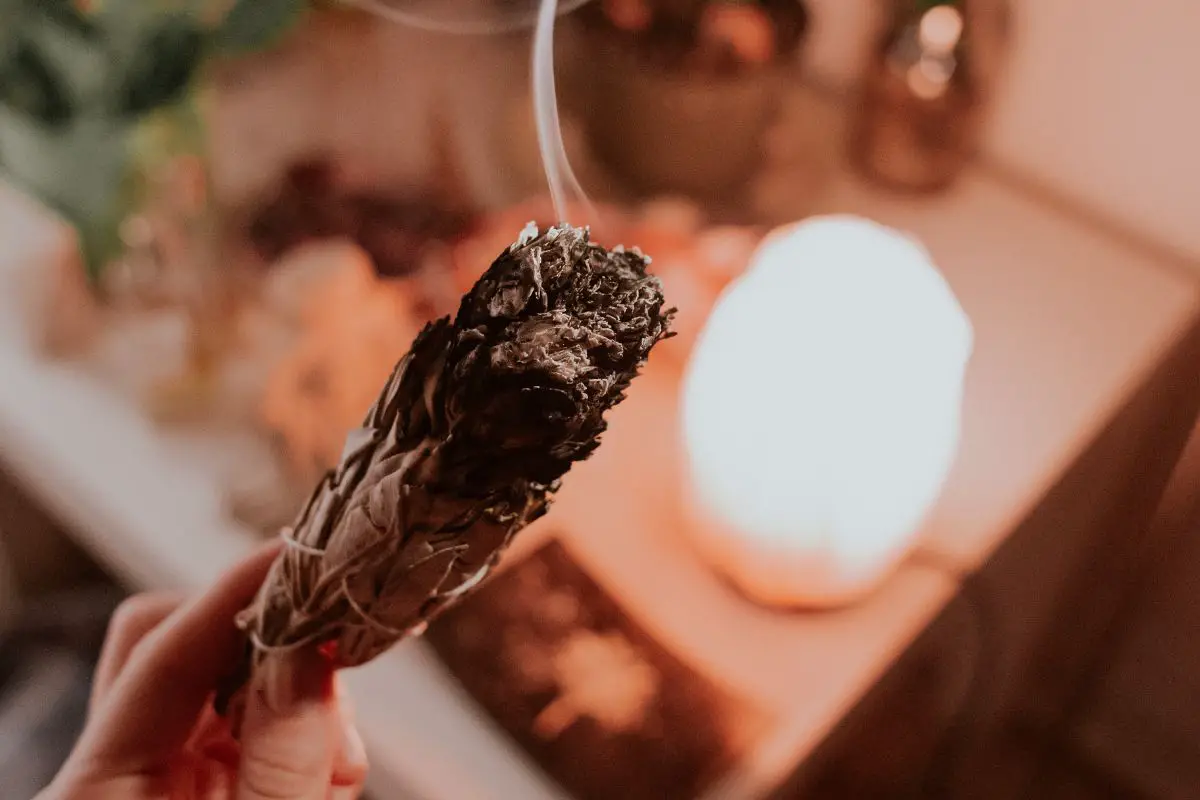Sage ashes are a natural byproduct of using sage for smudging and other spiritual practices.
You might wonder what to do with these ashes once you’ve completed your ritual or cleansing session.
Luckily, there are a few options for properly disposing of sage ashes, allowing you to maintain the positive energy flow in your space while respecting the sage plant itself.
One common and respectful method for disposing of sage ashes is to bury them.
By doing so, you’re returning the ashes to the earth, allowing them to be one with their natural origin.
This practice helps maintain the balance of the earth and fire elements in your rituals and your surroundings.
Another option for utilizing sage ashes is to incorporate them into other spiritual practices.
These ashes can be added to homemade incense blends, used to make lye water for soap making, or even sprinkled around your home for additional energetic protection.
The possibilities are endless, so let your intuition guide you in finding the best use for your sage ashes.
Understanding Sage Ashes
Properties and Benefits
Sage ashes, the remnants after burning a sage smudge stick, possess certain properties that make them useful in a variety of ways.
As you collect the ashes, be aware they may still hold some of the benefits of burning sage.
For example, they can be used for:
- Relieving headaches and sore throat pain
- Reducing oxidative stress in the body
- Protecting against free radical damage
- Reducing inflammation
- Protecting against bacterial and viral infections
Remember to handle them with care and respect the traditions that surround their use.

Cultural and Spiritual Significance
Sage ashes are not just a byproduct of smudging, they have a cultural and spiritual significance too.
In many traditions, sage ashes are believed to carry the energies that have been cleansed from your space.
Consequently, the proper disposal of the sage ashes is important.
One way to dispose of your sage ashes is by burying them into the earth, symbolizing the transformation of negative energies into new, positive ones.
This act of replanting the ashes into the earth helps to recharge and rejuvenate the energy around you.
In addition to this practice, you can also incorporate sage ashes in other rituals or use them as a protective amulet.
Some people even place them in tiny jars or pouches and wear them for added protection.
When handling sage ashes, always remember their cultural and spiritual significance, and be mindful of the energies and intentions you bring to the process.
By doing so, you can harness the full potential of these powerful remnants and enhance your spiritual journey.
Practical Uses for Sage Ashes
Sage ashes, the residue left after burning sage, can have multiple practical uses.
In this section, we will explore a few of those uses, specifically in the areas of gardening, pottery, and natural dyeing.
Gardening and Soil Amendments
Adding sage ashes to your garden can provide a variety of benefits.
First, it can help neutralize overly acidic soil, improving its fertility and the growth of your plants.
Simply mix the ashes into the soil or sprinkle them around the base of plants that thrive in neutral or slightly alkaline conditions.
Another benefit of using sage ashes in the garden is pest control.
Sprinkle a small amount around tender plants to help deter pests like slugs, snails, and ants.
Remember to reapply after rain, as it can wash the ash away.
Creating Pottery and Artwork
Sage ashes can also be utilized in the creation of pottery and artwork.
You can mix the ashes with clay to create unique, sustainable pottery pieces.
The ashes can add interesting texture and color variations to the clay, giving your pottery an earthy and organic feel.
Additionally, you can incorporate sage ashes into your artwork by using them as a medium.
Try mixing the ashes with paint or other materials to create one-of-a-kind pieces that showcase the natural beauty of the sage plant.
Natural Dyes and Pigmentation
Using sage ashes as a natural dye or pigmentation agent is an eco-friendly and creative way to repurpose the remnants of your sage.
The ashes can be combined with various natural materials to create a range of colors and effects.
Experiment with mixing sage ashes with different plant materials, water, vinegar, or other natural substances to develop your own unique color palette.
Apply the resulting dyes to fabrics, paper, or other surfaces as desired to explore the world of natural dyeing with sage ashes.
Spiritual and Healing Applications
Meditation and Ritual Practices
When using sage ashes for meditation or other ritual practices, find a quiet, comfortable space where you can focus your thoughts and intentions.
Lightly scatter the sage ashes around your meditation area in a circle, symbolizing unity and protection.
As you meditate, the ashes help create an energy field that allows you to tune in to your spiritual core, enhancing your mindfulness and concentration.
Another way to incorporate sage ashes into your rituals is by incorporating them in talismans or amulets.
Add the ashes in small pouches, along with other symbolic or meaningful items, to create a personal talisman for protection, healing, or cleansing purposes.

Energy Cleansing and Recharging
You can use sage ashes to cleanse and recharge your crystals or other spiritual tools. Mix the ashes with a small amount of water to form a paste. Then, gently rub the paste on your crystals or tools. Allow the ashes’ purifying properties to cleanse and recharge their energy. Afterward, rinse your crystals with clean water to remove any remaining ash residue.
These are just a few ways to incorporate sage ashes into your spiritual and healing practices. Remember to always trust your intuition and use the ashes in a way that feels right for your personal beliefs and practices.
